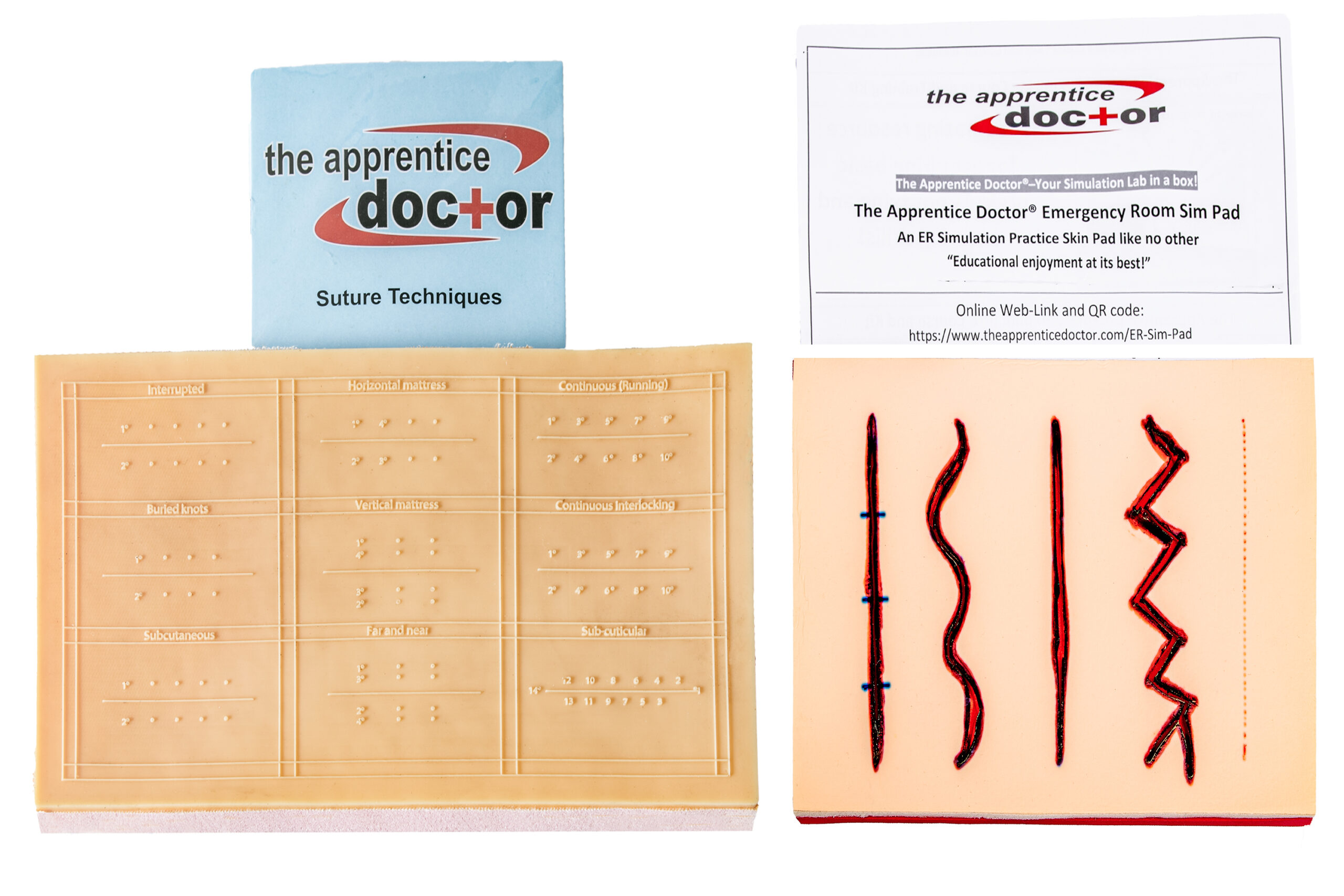There are several common suture techniques which can be used to close wounds. The first requirement is to possess a suture kit that includes, at least, the basic tools of a needle holder, toothed tissue forceps (with or without a skin hook), fine suture scissors and adequate suturing material.
Two types of suture material should be available and used depending on the type of wound. Absorbable suture material is normally used for deep tissue wound stitching (buried sutures). It loses its tensile strength in less than 2 months and does not need to be removed. Non-absorbable suture material maintains its tensile strength longer and is normally used for stitching skin wounds. This type of suture material must be removed once the wound has healed.
Various Common Suture Techniques
Simple Interrupted Method – This suture technique provides a better result cosmetically due to a greater eversion of the wound edge that produces a thinner, less visible scar. Stabilize the edge of the wound with either a skin hook or toothed forceps and enter the suturing needle perpendicularly from three to five millimeters away from the edge of the wound. Tie a knot and repeat. Take care not to utilize a flat angle as less eversion is produced and greater scarring will occur.
Continuous Method – A continuous suturing technique is much faster than the simple interrupted method. However, it is a weaker suture that also tends to strangle the affected area’s blood supply. The same suture technique is used to begin as is used for the simple interrupted method. However, instead of cutting and tying the suture, it is brought across the cut diagonally where the needle is again introduced in a perpendicular manner. The suture is tied by forming a loop at the end and the needle passed through.
Horizontal Mattress Method – The horizontal mattress suture is commonly used to provide necessary tension for large wound closure. However, this suture risks dermal blood supply strangulation which can lead to necrosis. The needle is entered between five and ten millimeters from the edge of the wound, crosses the wound and exits on the opposite side where the needle is reintroduced (on the same side) between three and five millimeters from the exit point and repeated.
Vertical Mattress Method – This technique provides superior eversion of the wound edge over the horizontal mattress suture. The vertical mattress stitch offers excellent support and minimizes dead space. Introduce the needle between five and ten millimeters from the edge of the wound ensuring a deep amount of tissue is achieved. Then exit the skin on the opposite side, reverse needle position and reenter the skin from one to three millimeters to the side and, again, take a deep bite of tissue when repeating to side one. Secure with a knot at the end.
Buried Method – Large, gaping wounds require suturing in the dermis layer of the skin in order to close dead space. The buried suture technique is used to accomplish this, providing extended support during healing as well as an improved cosmetic result. Use a skin hook to evert the edge of the wound. Using absorbable suture thread, enter the needle in the subcutaneous tissue and exit through the dermal tissue on the same side. Reenter the needle through the dermal level on the opposite side of the wound and exit through the subcutaneous tissue. Tie a knot deep ensuring it has short ends and repeat for the next stitch.
You can read more on suture techniques here.
What do you think? Leave us a comment below.

